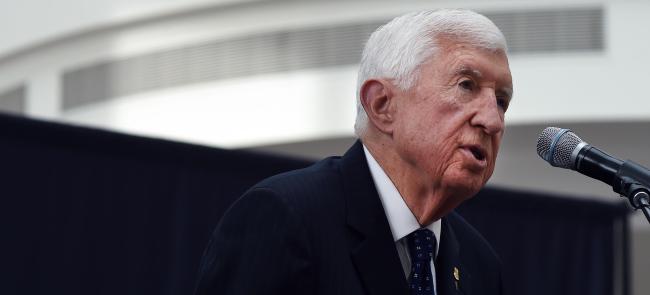
The nation lacks the processes and systems to conduct a military draft in response to a near-peer conflict, according to a new report by a think tank based in Washington, D.C.
The United States ended conscription in 1973, relying since on the all-volunteer force.
But all U.S. males ages 18 to 25 are still required to register with the Selective Service System in case a draft is ever needed again.
"To be clear, this report is not advocating for implementation of a draft," states the Center for a New American Security report, which was released June 18.
"Rather, it is a call to ensure that if the United States ever faced an existential threat requiring the president and Congress to pass a draft, the systems, processes, and structures necessary to successfully execute it would be in place," it continues.
Russia's invasion of Ukraine in 2022 demonstrates that modern conflict is still a "fundamentally human endeavor" despite technological advances, the report notes.
The report cautions the draft is neither a tool to meet end-strength requirements nor achieve social policy goals, but "a matter of meeting human capital requirements for near-peer conflict."
Currently, men are automatically registered for the draft when they either get a driver’s license or apply for college in at least 46 states and territories, The Seattle Times reports.
In 2023, the National Registration Rate was 84% for military service, and more than 15 million men had registered nationwide, according to the Selective Service System.
CNAS's study comes as Congress is weighing changes to the SSS through provisions in the fiscal 2025 National Defense Authorization Act.
The House version of the fiscal 2025 NDAA contains a provision to automatically register all eligible men, while a provision in the Senate version would require women to register for Selective Service.
Neither provision is expected to survive a conference committee, which will reconcile the differences between the two bills.
To develop their conclusions, CNAS officials relied on historical and comparative research, interviews with policymakers and experts, legal reviews and a draft mobilization tabletop exercise.
CNAS analysts also examined past mobilization exercises conducted since the draft's end, including Nifty Nugget in 1978 and Proud Saber in 1982.
The analysts additionally conducted a mock draft mobilization exercise that was geared toward implementing a draft in the wake of aggression from China.
The exercise operated under the understanding that 500,000 induction notices would produce 100,000 inductees to the military services ready to ship to basic training within 193 days.
Among the challenges the exercise identified: the current 18-25-year-old male population may not produce enough conscripts, the legal challenges to an all-male draft and social media playing into the perception of a draft's unfair implementation.
The CNAS report made recommendations to the nation's legislative and executive branches and the SSS.
Among the report's recommendations, CNAS suggests considering older individuals for a draft first as a "future combat environment" might necessitate personnel with more life experiences or advanced skills.
The full CNAS report can be found here.
— By Jennifer Hickey












